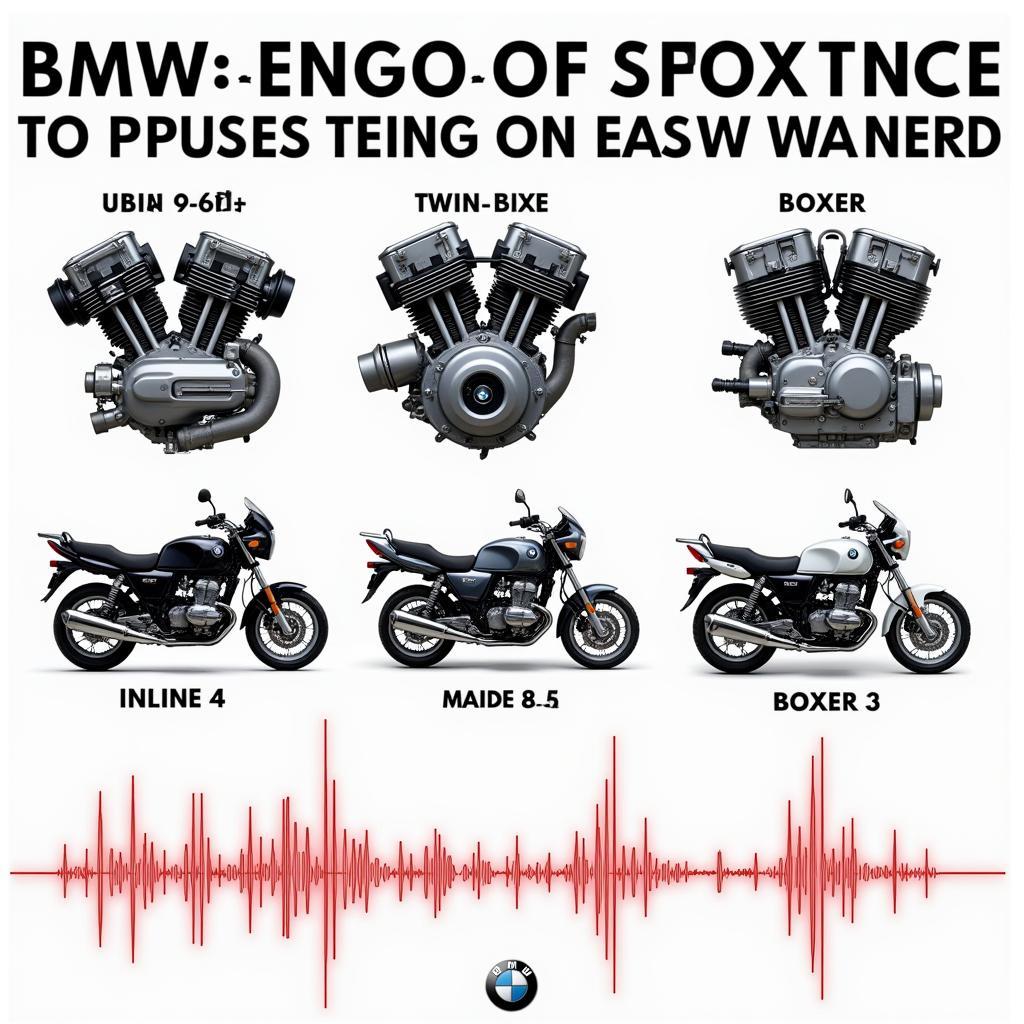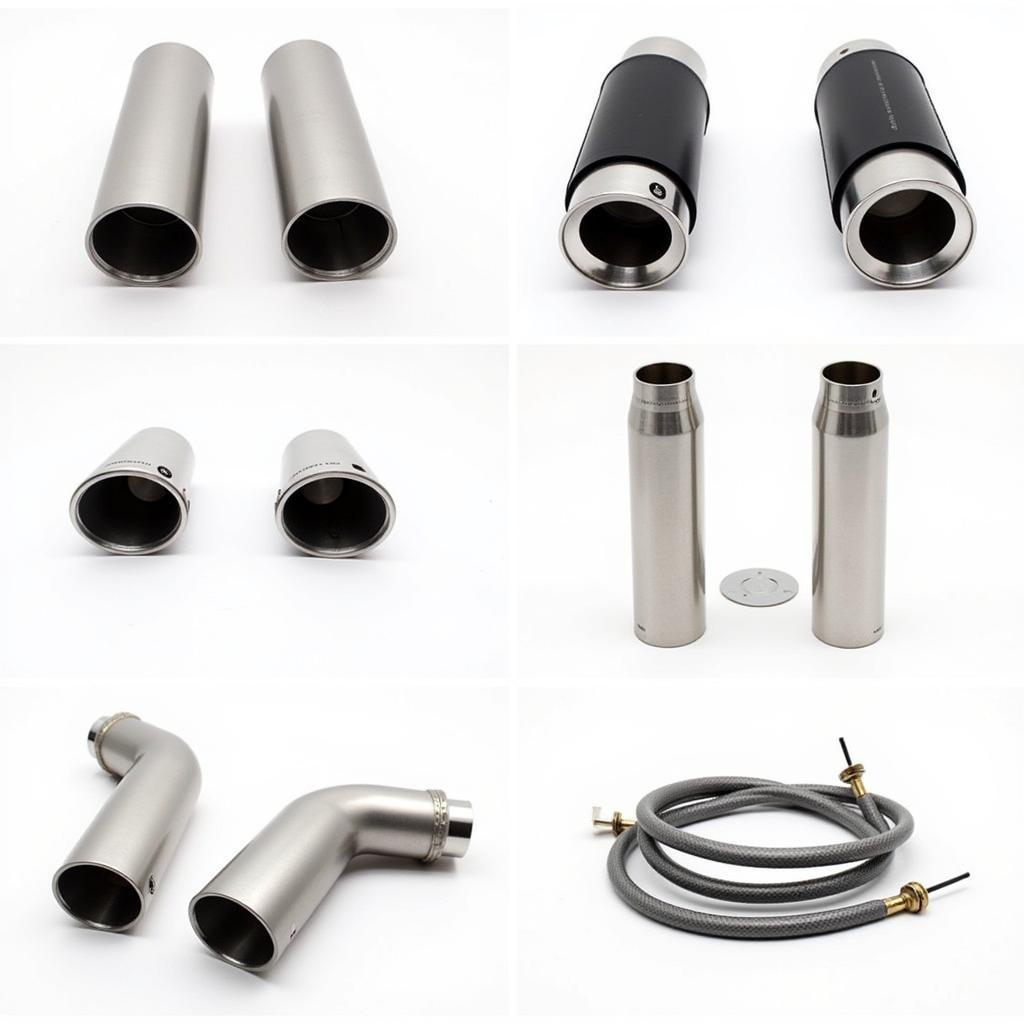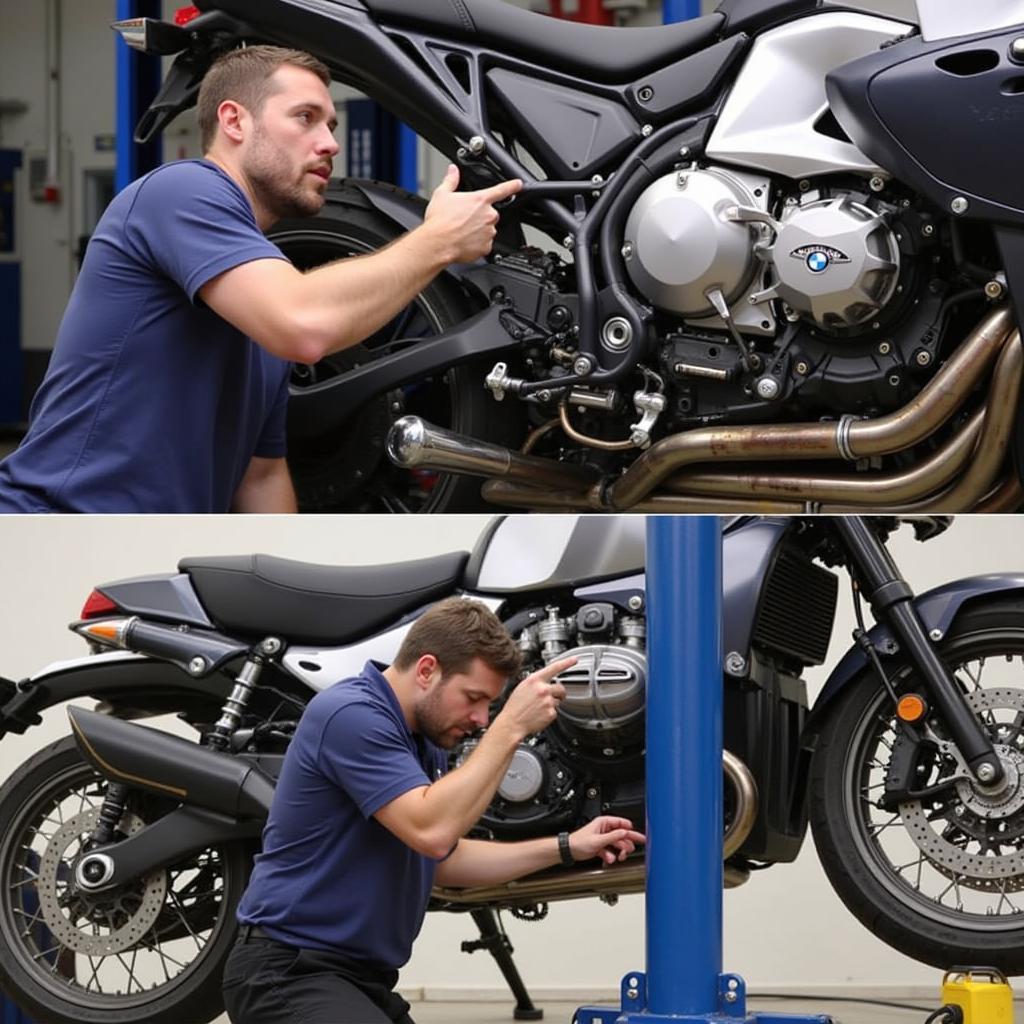The distinct rumble of a BMW bike exhaust is more than just noise; it’s a symphony of engineering and performance. Whether you’re a seasoned rider or simply appreciate the growl of a well-tuned engine, understanding the nuances of BMW bike exhaust sound can enhance your riding experience. This article explores the factors influencing BMW bike exhaust notes, from engine design to aftermarket modifications.
The Science Behind the Sound
The sound emanating from your BMW bike’s exhaust is a direct result of controlled explosions within the engine’s cylinders. These explosions force hot gases out through the exhaust system, creating pressure waves that we perceive as sound. Several factors contribute to the unique acoustic signature of a BMW bike: engine configuration (inline-four, twin, or single-cylinder), displacement, exhaust pipe diameter, muffler design, and even the materials used in the exhaust system’s construction.
Engine Configuration and Displacement
The number of cylinders and their arrangement significantly influence the exhaust note. An inline-four engine, like the one found in the BMW S1000RR, produces a high-pitched, screaming sound, whereas a twin-cylinder engine, such as the one in the BMW R1200GS, delivers a deeper, more throaty rumble. Engine displacement also plays a role; larger displacement engines generally produce a more powerful and resonant sound. Similar to the bmw s1000rr sound, the sound profile is influenced by engine design.
 BMW Bike Engine Configurations and Their Corresponding Exhaust Notes
BMW Bike Engine Configurations and Their Corresponding Exhaust Notes
Exhaust System Components
The exhaust system itself plays a crucial role in shaping the final sound. The diameter of the exhaust pipes affects back pressure and gas flow, influencing the tone and volume. The muffler, designed to reduce noise levels, also contributes to the overall sound profile. Different muffler designs can produce a variety of sounds, from a muted purr to a loud roar. Materials such as stainless steel, titanium, and carbon fiber can also subtly alter the exhaust note. This phenomenon also extends to bikes like the bmw r18 sound, where exhaust design plays a key role in the overall acoustic experience.
Modifying Your BMW Bike’s Exhaust Sound
Many riders choose to modify their BMW bike’s exhaust system to achieve a specific sound. Aftermarket exhaust systems offer various options for customization, allowing riders to fine-tune their bike’s acoustic signature.
Aftermarket Exhaust Systems
Replacing the stock exhaust with an aftermarket system is a popular modification. These systems are often designed to improve performance while also altering the sound. Slip-on mufflers are a relatively simple modification that replaces the stock muffler while retaining the original exhaust headers. Full exhaust systems, on the other hand, replace the entire exhaust system from the headers back, offering greater potential for performance and sound customization. Exhaust systems for models such as the bmw r1200rt exhaust sound offer distinct tonal qualities that appeal to a variety of riders.
 BMW Bike Aftermarket Exhaust System Options
BMW Bike Aftermarket Exhaust System Options
Understanding Legal Regulations
Before modifying your BMW bike’s exhaust, it’s essential to understand the legal regulations regarding noise levels in your area. Excessively loud exhausts can result in fines and legal penalties. For information on the unique sound profiles of specific models, you can explore resources like the bmw s1000rr exhaust sound compilation.
Why is the exhaust sound of my BMW bike changing?
Changes in your BMW bike’s exhaust sound can indicate underlying issues, ranging from minor problems to more serious mechanical failures. A sudden increase in loudness could signal a hole in the exhaust system, while a rattling sound might suggest a loose component. A change in the exhaust note, such as a deeper or raspier sound, could indicate issues with the engine itself. Understanding these changes helps in diagnosing potential problems and ensures the longevity and performance of your BMW bike. For those interested in the sound of different models, the bmw s1000r sound offers a compelling comparison.
 Troubleshooting BMW Bike Exhaust Issues
Troubleshooting BMW Bike Exhaust Issues
Conclusion
The bmw bike exhaust sound is a defining characteristic of the riding experience. From the deep rumble of a boxer engine to the high-pitched scream of an inline-four, the exhaust note reflects the bike’s personality and performance. Understanding the factors influencing the exhaust sound and knowing how to modify it responsibly can enhance your enjoyment of riding your BMW bike.
FAQ
- What determines the bmw bike exhaust sound? Engine configuration, displacement, exhaust system design, and materials.
- Can I modify my BMW bike’s exhaust sound? Yes, with aftermarket exhaust systems.
- Are there legal restrictions on exhaust noise levels? Yes, regulations vary by location.
- What does a change in exhaust sound indicate? Potential mechanical issues, requiring inspection.
- Where can I find more information on specific BMW bike exhaust sounds? Online forums, videos, and specialized websites.
- How can I choose the right aftermarket exhaust for my BMW bike? Consider desired sound, performance goals, and local regulations.
- What are the potential consequences of an excessively loud exhaust? Fines, legal penalties, and negative impact on others.
Need assistance with your BMW bike’s diagnostics, programming, or remote software installations? Contact us via Whatsapp: +1 (641) 206-8880, Email: CARDIAGTECH[email protected] or visit us at 276 Reock St, City of Orange, NJ 07050, United States. Our 24/7 customer support team is ready to help.
